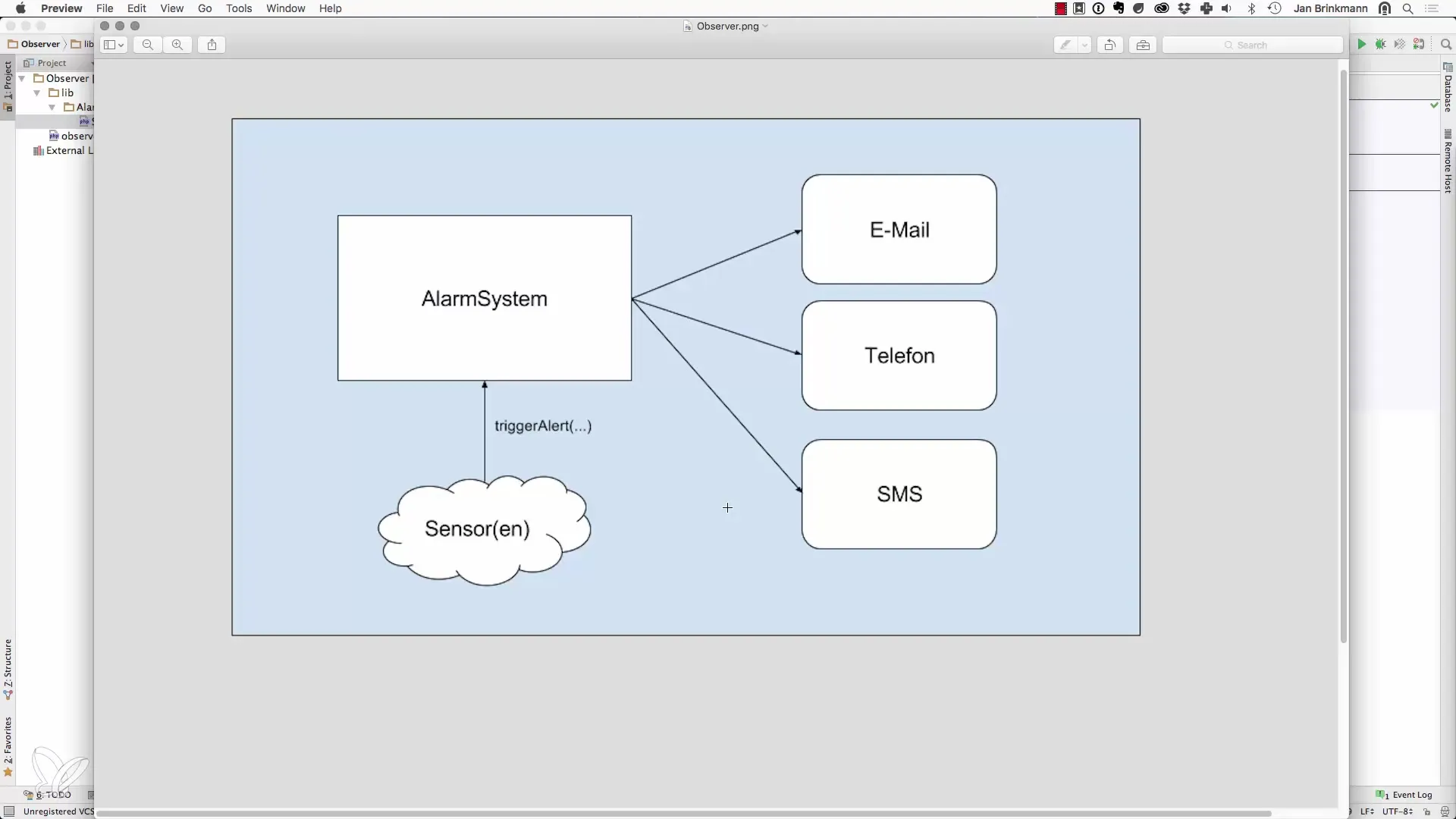The Observer Pattern is a fundamental design pattern in software development that allows you to minimize coupling between objects. Through a practical example, an alarm system, you will learn how to effectively implement the Observer Pattern in PHP. A central alarm system is designed so that various notification services such as email, SMS, or phone calls can act as observers.
Key Insights
- The Observer Pattern allows for loose coupling between objects.
- Objects can register with a central system to receive notifications.
- Modular code promotes the maintainability and flexibility of your application.
Step-by-Step Guide
Understanding the Observer Pattern
First, you should clarify what the Observer Pattern is intended to achieve. In our example, an alarm system is triggered by various sensors, which then send notifications to the registered observers – e.g., email and SMS services. The goal is to loosen the coupling between the alarm system and the notification services.

Implementing the Alarm Class
Start by developing the alarm system. Create a central class that can trigger the alarm. This class will be complemented by a dispatcher that forwards the notification to the registered observers.
Registering Observers
To implement the Observer Pattern, you should define an interface in your alarm system that enables the registration and notification of observers. The attach() method allows an observer to register, while detach() allows it to unregister.
The Observer Interface
Now create the observers. Define an abstract class that implements the interface. This class will contain the basic functions that each specific observer needs, especially the update method, which is called when an alarm is triggered.
Alarm Dispatcher
Implement the dispatcher in your alarm class. In this class, use an array to store the registered observers. The dispatcher will implement the attach() and detach() methods to add or remove observers.
Notify Method
The dispatcher must have a notify() method that notifies all registered observers when an alarm is triggered. This calls the update() method of the observers so they can execute their specific logic for the notification.
Creating the Concrete Observers
Now define the concrete observers. Create classes for email, SMS, and phone that all inherit from the abstract observer class. Each of these classes implements the update() method and executes the specific logic for alarm notification.
Integration of Observers
In the main file of your application, show how the alarm system and observers are integrated. Register the various observers with the alarm system by calling the attach() method and passing the respective instances.
Testing the Alarm System
Now you can test the alarm system in a browser. When the alarm system is triggered, each registered observer should receive the corresponding notification. You can verify this by triggering the alarm in your code.
Modularity and Flexibility
The use of the Observer Pattern improves modularity. Observers can be added or removed without modifying the alarm system itself. This provides a high level of flexibility, especially as the application grows or requirements change.
Summary – Observer Pattern in Object-Oriented Web Programming with PHP
The Observer Pattern is an effective means to reduce coupling between objects in a software system. Through the example of the alarm system, you have not only learned the structure and implementation of this pattern but also understood the advantages concerning modularity and flexibility. Experiment with the Observer Pattern to translate theory into practice.
Frequently Asked Questions
How do I register an observer?You register an observer by passing the instance of the observer to the attach() method of the alarm system.
What happens when an observer is unregistered?If an observer is unregistered via the detach() method, it will no longer receive notifications when an alarm is triggered.
Can multiple observers be registered at the same time?Yes, you can register as many observers simultaneously as long as they meet the requirements of the observer interface.
How is notification sent to the observers?Notification is done through the notify() method in the alarm system, which calls the update() method of each registered observer.


